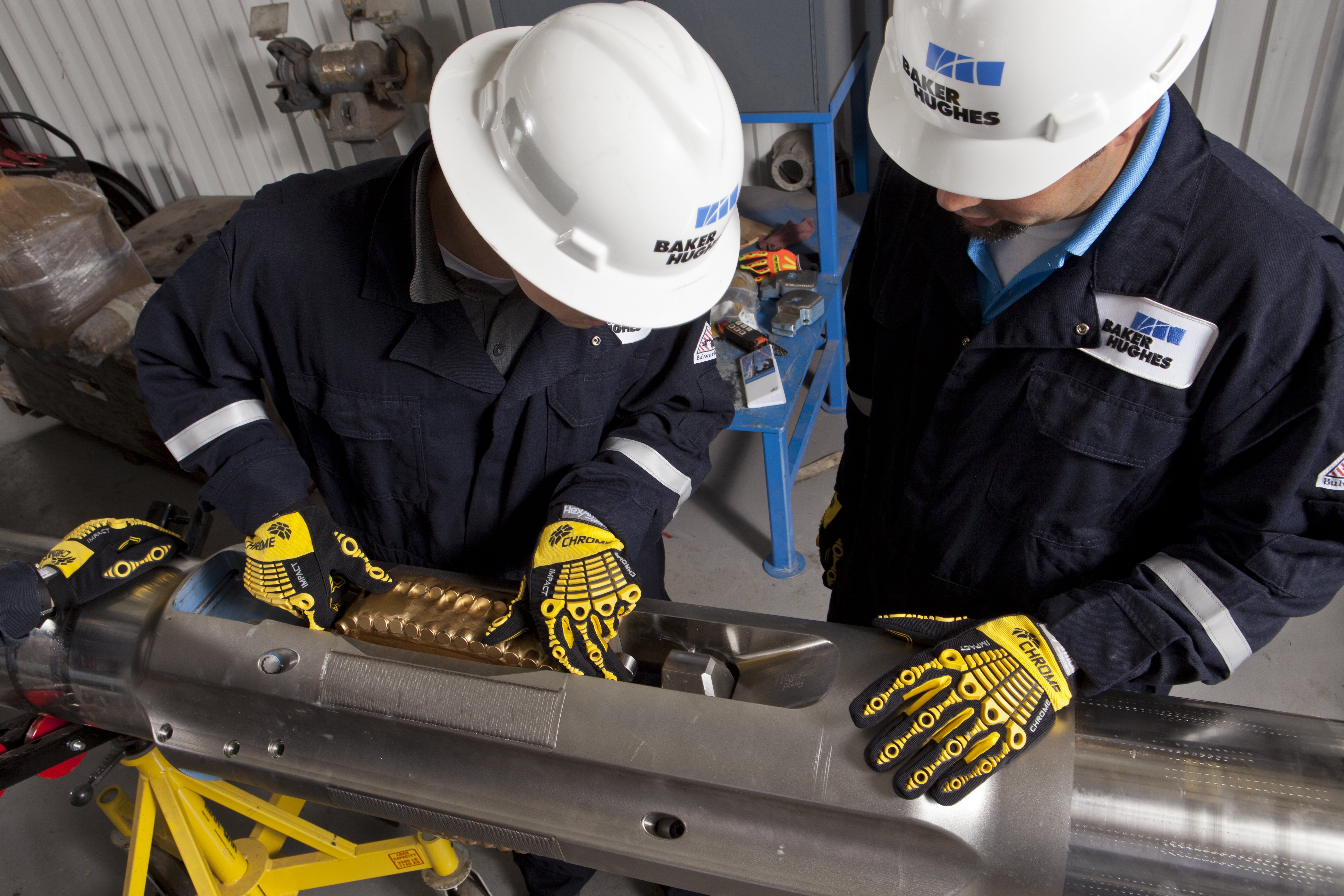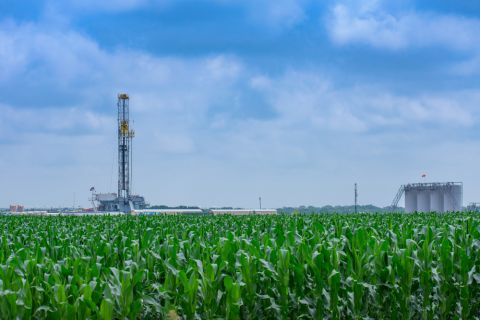With oil and gas prices at their lowest levels in years, field operators—particularly those working in challenging deepwater conditions—continually look for ways to improve well efficiency, economics and safety. On-command digital underreaming exemplifies how the Internet of Things (IoT) can raise the level of communication, operational reliability and flexibility—and with it, can provide savings in time, cost and risk—in these high-cost-per-foot operations.
Through IoT, sensors and actuators embedded in physical objects are linked through wired and wireless networks, often using the same Internet protocol that connects the Internet. The industry’s first on-command digital reamer, the Baker Hughes GaugePro Echo, is powered by electrical current from the MWD system, which is generated by a mud-driven turbine or through wired pipe.
Tool control and real-time feedback are exercised via the MWD system, which could be mud-pulse or wiredpipe technology. The blades are retracted using a hydraulically driven piston that operates independently of flow rate, fluid pressure, rpm and weight on bit.
Unconstrained by mechanical activation restrictions, the reamer can be activated and deactivated as many times as necessary. It also can provide the long-sought real-time confirmation of blade status and position, and it can send back information on oil pressure, temperature and vibration in real time for diagnostics and drilling optimization purposes.
The multiple activations reduce drilling and completion risks by enabling selective reaming of problem formations and reaming of sidetrack windows to facilitate openhole sidetracks. An additional benefit is that activation and deactivation are quick, requiring only eight minutes (via mud-pulse telemetry).
In addition to its real-time capabilities, the reamer is equipped with electronics and autonomous memory, which stores diagnostic information such as the tool mode, diameter and vibration data that can be accessed and viewed on the rig site.
The GaugePro Echo reamer can be placed multiple times anywhere within the bottomhole assembly (BHA), including very near the bit. It can drill and ream in one run, which reduces pipehandling and rig floor time along with associated HSE risks. Additionally, triple-redundancy fail-safe measures ensure that the reamer always trips out of hole, so operators can stay on schedule.
As many as three independent reamers can be placed in one BHA. This feature is especially valuable for rathole reaming. When the reamer is placed near the bit, the traditional second rathole reaming run is eliminated, wellbore conditions
are improved and casing can be run faster and safer.
Compounding benefits
The first on-command digital reamer was developed jointly by Baker Hughes and an operator in 2007 as a single-size prototype controllable from the surface. The remotely operated hydraulic-electric reamer was used exclusively in the Norwegian and U.K. sectors of the North Sea. In 2012, Baker Hughes began to develop several sizes of an improved downlink-activated reamer for global offshore markets. The new reamer is the only one of its kind that can digitally confirm activation
and deactivation. Thus far it has compiled a track record in the North Sea, the Gulf of Mexico (GoM) and Malaysia.
In a recent application in the GoM, a deepwater operator saved an estimated six days of total rig time—and $6 million—compared to the authorization for expenditure (AFE) plan. A well was planned with a 2.5-degree buildup rate to reach geological targets and avoid nearby wells. The operator also needed to remove the remaining pilot hole in the build section of the well so that casing could reach an optimum depth between a sand formation and a deeper slump with unknown depth spacing.
In similar hole sections in previous wells, the operator previously had to perform dedicated reaming runs to open the remaining pilot holes. Each run required a trip with a new BHA that resulted in at least 30 hours of rig time for each well, increased HSE risks and triggered hole-condition issues. Resulting tool damage, system failures and circulation loss in these wells pushed the operator to develop a 12-day AFE plan for the next well.
Combining systems, services
Combining the on-command digital reamer with an integrated rotary steerable system, MWD monitoring system and near-bit gamma service delivered precise directional control, overcame tool damage and failures and enabled the pilot hole to be efficiently reamed in the same run.
Additionally, the Baker Hughes WellLink wireline service provided web-based visualization of real-time drilling data. This service enabled office personnel to identify hazards and make even more effective drilling recommendations. The integrated solution enabled the well to be built to 3,738 ft (1,139 m) and to hit the target angle with a 2.5-degree buildup rate. The solution also did not lead to any nonproductive time or tool failures and overcame circulation loss. The pilot hole was also opened in the same run, eliminating a dedicated reaming trip.
Savings in the range of $1.5 million also were realized on two additional deepwater GoM projects. On one project, the operator wanted to eliminate as much as a rathole to maximize casing depth in an exploratory well with unknown formation pressure gradients. At the same time, the operator needed to maintain a safe overbalance by measuring formation pressures in real time.
The automated drilling solution combined on-command digital reaming with rotary steerable drilling, an LWD system that provided real-time formation pressure and mobility data, closed-loop sealing and intelligent test systems, near-bit gamma-ray LWD sensors to detect geological targets earlier while drilling, reliable neutron porosity and formation density logs at rapid sampling rates, and direct shear slowness measurements.
The integrated solution enabled the operator to characterize formation pressure gradients in real time while safely maintaining circulation on the well. Section total depth was extended, casing depth was maximized and real-time hole diameter updates were provided. The operator saved an estimated 32 hours of rig time and $1.6 million.
On another deepwater GoM well, the operator wanted to
• Build and hold a 23.34-degree angle while drilling reaming;
• Reduce rathole length without tripping; and
• Ensure reliable tool communication.
Using the on-command digital reamer eliminated the need for a dedicated rathole run and saved the operator an estimated 30 hours of rig time and $1.5 million.
In a well offshore Norway, using an automated drilling solution with the on-command digital reamer enabled an operator to drill an extremely long section 2.7 days faster than the set target despite high calculated equivalent circulating density in the 12¼-in. hole section, low drilling performance due to hard limestone stringers and unstable formations, and high torque and drag.
When objects can both sense the environment and communicate, they become tools for understanding complexity and responding to it swiftly. Automated drilling with on-command digital underreaming proves the validity of this statement—and the value of the IoT to oilfield operations.

Recommended Reading
Gulfport Plans Liquids-rich Program After ‘Strong’ Ohio Oil Tests
2024-05-01 - Appalachia gas producer Gulfport Energy continues to report “strong oil production” from a two-well Hendershot pad drilled in eastern Ohio last year. Gulfport plans to develop additional liquids-rich opportunities this year as natural gas prices hover near record lows.
Chevron CEO: Permian, D-J Basin Production Fuels US Output Growth
2024-04-29 - Chevron continues to prioritize Permian Basin investment for new production and is seeing D-J Basin growth after closing its $6.3 billion acquisition of PDC Energy last year, CEO Mike Wirth said.
Novo II Reloads, Aims for Delaware Deals After $1.5B Exit Last Year
2024-04-24 - After Novo I sold its Delaware Basin position for $1.5 billion last year, Novo Oil & Gas II is reloading with EnCap backing and aiming for more Delaware deals.
Enverus: 1Q Upstream Deals Hit $51B, but Consolidation is Slowing
2024-04-23 - Oil and gas dealmaking continued at a high clip in the first quarter, especially in the Permian Basin. But a thinning list of potential takeout targets, and an invigorated Federal Trade Commission, are chilling the red-hot M&A market.




